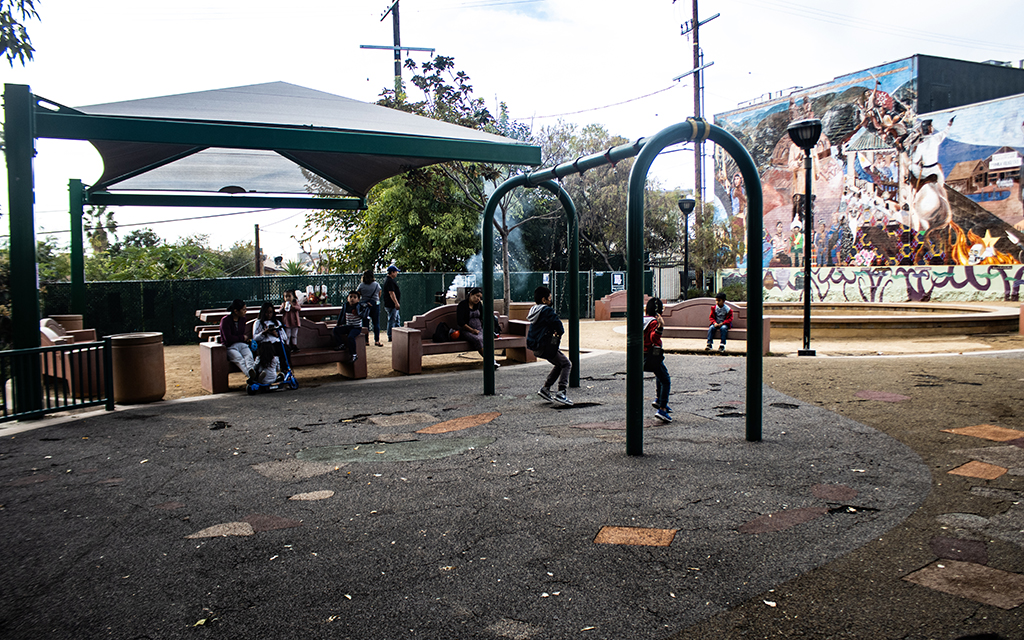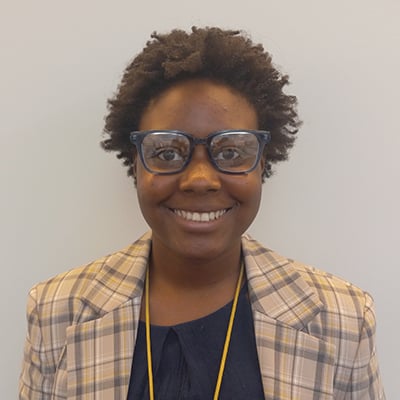
Los Angeles’ Historic Filipinotown last spring erected a grand gateway to a community that Filipino Americans say has been overlooked. Photo taken Nov. 17. (Photo by Emeril Gordon/Cronkite News)
LOS ANGELES – When artist Eliseo Art Silva immigrated to Los Angeles in 1989, he hoped to find a neighborhood reminiscent of the rich culture of his native Philippines. But when he arrived in LA’s Filipinotown, what stood out most to him were the yellow arches of a McDonald’s restaurant.
Venturing farther into the neighborhood northeast of downtown, Silva saw a few – but still not many – symbols of his homeland: a Seafood City market, the flag of the Philippines flying atop a nondescript building and the Luzon Plaza strip mall.
“How come they’re so mundane?” Silva recalled having wondered. “It’s so random.”
Los Angeles is defined by its rich blend of ethnic communities like Little Tokyo, Thai Town, Little Tehran, Koreatown and Chinatown, to name a few. But while those districts attract droves of tourists and locals to their rich arrays of shops and restaurants, Historic Filipinotown – the locals call it HiFi – remains largely overlooked.
The city’s inability to support a distinct, vibrant Filipino American district seems odd given that Filipino Americans are nearly 1.7 million strong in California. They’re the state’s second-largest Asian minority, behind those of Chinese descent. In Arizona, Filipinos are the largest Asian minority. And nationally, they’re third behind Chinese and Asian Indians – and well ahead of Vietnamese, Korean and Japanese.
Demographics and language play a role in HiFi. Although many Filipino Americans live there, it’s also home to many – if not more – Latinos.
Immigrants often settle where they can speak their native tongue, revel in traditional culture and mingle with fellow new arrivals until they assimilate. But Filipinos arrive with a head start. Almost all speak English – the Philippines was an American territory until 1946 – and many are Americanized from connections to the U.S. military.
That makes it easier to melt into U.S. culture. As Filipino immigrants find work, they disperse to Fullerton, West Covina, Cerritos and other LA suburbs.
Although cosmetic revamps of HiFi have been slow, there’s a sprig of hope: A new 30-foot tall archway, spanning 80-feet across Beverly Boulevard, was dedicated in May to serve as a grand gateway to the district.
The Historic Filipinotown Eastern Gateway, whose Tagalog name “Talang Gabay” translates to “Our Guiding Star,” spans Beverly Boulevard, just northwest of downtown Los Angeles, and as one of the largest U.S. monuments recognizing the role of Filipinos in American history. It includes several symbols of Filipino culture: the parol (lantern), the gumamela flower (hibiscus rosa-sinensis) and the Sarimanok (a legendary bird), among them.

Kids play in Unidad Park in Los Angeles’ Historic Filipinotown, which features a mural portraying Filipino-American heroes, including labor leaders. (Photo by Emeril Gordon/Cronkite News)
Community leaders want the arch to inspire Filipino Americans in Los Angeles and provide a focal point to those in search of their ancestral identity.
“I hope that when people see this gateway they’re inspired,” said Jessica Caloza, the first Filipino to be appointed commissioner on the Los Angeles Board of Public Works and a driving force behind the gateway.
“What makes me really hopeful about Historic Filipinotown is that we’re continuing to see progress in the city about what it means to be a Filipino American,” she said.
Silva, too, wants to preserve his Filipino heritage, making a vibrant Filipinotown all the more important. He contributed to the design and planning of the gateway and is the artist behind a sprawling Philippines-themed mural in LA’s Unidad Park. The mural honors Flipino-American heroes like labor organizer Larry Itliong, who joined civil rights activist Cesar Chavez to lead Latino and Filipino farmworkers in the Delano Grape Strike in 1965.
The mural was a response to Silva’s reaction to seeing the McDonald’s upon first setting eyes upon Filipinotown. He wants his art to revive the story of Filipino history in a way that isn’t watered down by American narratives. Filipinos have lost the knowledge of their stories as they chase the American dream, he said.
“We don’t know who we are. We don’t know our identity,” Silva said.
Cecilia Cortez Ramos, a community advocate and leader of Historic Filipinotown, said the area has seen some political progress. When she immigrated in 1969, the neighborhood was divided into three congressional districts.
Although the community members identified the area as Filipinotown, politically, it was difficult for consistent changes and developments to be made.
After a 30-year campaign from the community, Eric Garcetti – City Council member then, outgoing mayor now – led the effort to designate the area as Historic Filipinotown. In further sign of progress, the area was joined into a single congressional district in 2002.

For years, this little sign was about the only way people knew they were entering Filipinotown in Los Angeles. (Photo by Emeril Gordon/Cronkite News)
“Slowly after Garcetti,” Ramos said, “we (were) more visible because we have more potential voting because we are a bigger area rather than before.”
For Ramos, this historic designation was just the start of the expansion of Filipino visibility in Southern California.
“When I arrived in America, my uncle, who is an American, drove me around Little Tokyo … and Chinatown. And I said, ‘Where is the Filipino town?’” Ramos said. “So all along it’s (been) my prayer to have a Filipinotown and I think it’s happening.”
Jaime Gaega’s family emigrated from the Philippines in 1965, moving in and out of Filipinotown but seeing how, after every return, the Filipino population grew.
Despite being a recent immigrant, his late mother, Remedios “Remy” Gaega, was a trailblazer who opened many doors for Filipinos. His exposure to her work gave him and his siblings the opportunity to immerse themselves in Filipino American culture and remain active in the community as they grew up and continued to follow their mother’s legacy.
In 2010, the city designated the intersection of Temple and Alverado streets as Remy Gaega Square.
Gaega said the visibility of Historic Filipinotown has progressed since 1965.
“It still doesn’t quite come close to what Chinatown is or what Little Tokyo is,” Gaega said. “But I think these are all different communities of color, that are trying to leave their heritage and imprint in the areas that we all reside in. So I think it’s probably a slow and gradual change.”

